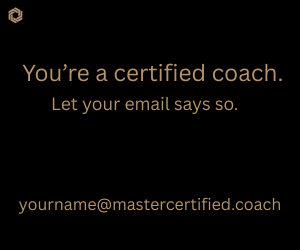What if Mindset Isn’t Step One?
We often say coaching is about shifting perspective.
That insight changes everything. And a lot of the time, it does. But then there are those other moments. The client nods. Agrees. Says all the right things. But you can feel it — something’s stuck. They’re not resisting. But they’re not shifting, either. And it’s easy, in that moment, to double down. To ask a sharper question. Try a new angle. Push for insight.
But what if it’s not a mindset block at all? What if their system isn’t stuck — it’s just not ready?
Let’s Redefine Resistance
Coaches are trained to notice when a client seems stuck. We’re attuned to patterns of avoidance, indecision, or hesitation — and we often name them as resistance.
But what if that’s not what’s happening? What if what we’re calling resistance is actually protection?
In those moments when a client spirals into over-explaining, shrinks into silence, or defaults to “I don’t know,” it’s easy to assume they’re avoiding something. That they’re not ready to move forward. That they’re resisting.
But underneath that behavior, something else might be happening — something quieter and more physiological. The nervous system may have clocked a threat, even a subtle one, and done exactly what it’s wired to do: protect.
That protection can look like shutdown. Or over-talking. Or rushing toward solutions. Or suddenly being very agreeable.
This isn’t resistance or disengagement—these are human responses to a perceived lack of safety.
The tricky part? They can be easy to miss. Especially in clients who are high functioning, articulate, or used to masking vulnerability with productivity, detachment, or charm.
When we don’t recognize those signs for what they are, we risk pushing insight before the client’s system is ready to receive it. And in doing so, we may unintentionally reinforce the very fear or pressure their body is trying to manage.
Before the Shift: When Safety Matters More Than Mindset
Coaching and mindset go hand in hand. We’re trained to look for limiting beliefs, reframe perspectives, and help clients step into new ways of thinking. And for good reason — mindset work can be powerful. Insight can change everything.
But somewhere along the way, “mindset shift” became the assumed starting point. The golden ticket. The thing we reach for first.
We’ve built a lot of our coaching rhythm around landing the question — that well-timed, well-crafted question — that opens the door. When it hits, it’s magic.
And yet, most of us have been in sessions where it doesn’t land. Where the client agrees, but something still doesn’t shift. Where the question is strong, the rapport is there, and still … nothing moves.
What if that moment isn’t about the quality of our question, but the readiness of their nervous system?
Because here’s what the brain knows, even if the client doesn’t say it out loud: mindset work asks for vulnerability. It asks for self-reflection, for openness, for risk. And the part of the brain that makes that kind of thinking possible is the prefrontal cortex — and it only comes fully online when the client feels safe.
But under stress, even subtle or social stress, the brain does something different. It activates the amygdala — the part responsible for scanning for danger and triggering survival responses. Fight. Flight. Freeze. Fawn. The body responds. The nervous system shifts into protection mode.
And when that happens, the prefrontal cortex — the very part of the brain we count on for insight, planning, creativity, and change becomes less accessible. It’s not gone — but it’s offline enough to make reflection hard and change feel out of reach.
That’s why mindset work — when done too early — can bounce off. Not because the client is unwilling. But because their brain is busy trying to keep them safe.
So no, this doesn’t mean we throw out mindset work. It means we stop assuming it’s where the work begins. Sometimes, before we invite a shift, we have to build the conditions where a shift can land.
Sometimes, mindset has to wait its turn.
So Coach, What Does This Actually Mean to You?
If insight depends on safety, then maybe the real work isn’t about shifting mindset first. Maybe it’s about creating the conditions where shift becomes possible.
And that changes things. It means our job isn’t to press forward. It’s to pay attention.
To notice the pace of the room. A change in posture. A shift in energy. When a client agrees, but something in their voice says otherwise.
It means we start with regulation — not reflection. Not just theirs, but ours.
Because if we’re holding tension in our bodies — hoping for the breakthrough, trying to “get there” — our clients will sense it. Even if our words sound supportive.
But when we’re steady, grounded, attuned — it makes room. It sends the message: This is safe. You don’t have to armour up.
It means choosing curiosity over urgency. Not jumping ahead. Not needing to reframe right away. Getting comfortable with quiet. With slowing down. With not knowing. And it means noticing when the client’s system is asking for something gentler. Sometimes that looks like slowing the pace. Sometimes it sounds like, “Can we pause here for a second?”
Sometimes it’s not a question at all — it’s how we hold the space, check for permission, and respect the client’s pace and readiness.
And no, this isn’t therapy. It’s real, human-centered coaching — grounded in how humans work, how safety works, and how the brain works. Presence, tone, trust — this is what the nervous system listens to first. They’re what tell the client’s system: You are safe here. And now the work can begin.
A Question to Sit With
If safety is what unlocks growth, then maybe the biggest shift we make as coaches isn’t in the questions we ask — but in the way we create space for answers to actually land.
A rooted place to start might be asking: What changes in your coaching when you treat safety as the starting point — not the side effect?
Join us in October at ICF Converge in San Diego
If you’re curious about what happens when we stop leading with mindset and start paying attention to safety, Rosa Edinga, PCC, MBA, will be exploring this topic in depth at ICF Converge 2025, taking place October 23-25 in San Diego, California, USA.
Join her session, “Beyond Mindset: How Psychological Safety Unlocks Client Growth and Coaching Impact” in the Coaching Science theme on Saturday, October 25 at 1:45 p.m. (local conference time) where Rosa will explore what the brain actually needs to reflect, shift, and grow — and how coaches can create those conditions with more clarity, trust, and intention. By attending this session, you can earn 0.75 Continuing Coach Education units in Core Competency.
Disclaimer
The views and opinions expressed in guest posts featured on this blog are those of the author and do not necessarily reflect the opinions and views of the International Coach Federation (ICF). The publication of a guest post on the ICF Blog does not equate to an ICF endorsement or guarantee of the products or services provided by the author.
Additionally, for the purpose of full disclosure and as a disclaimer of liability, this content was possibly generated using the assistance of an AI program. Its contents, either in whole or in part, have been reviewed and revised by a human. Nevertheless, the reader/user is responsible for verifying the information presented and should not rely upon this article or post as providing any specific professional advice or counsel. Its contents are provided “as is,” and ICF makes no representations or warranties as to its accuracy or completeness and to the fullest extent permitted by applicable law specifically disclaims any and all liability for any damages or injuries resulting from use of or reliance thereupon.
Authors
Post Type
Blog
Audience Type
Experienced Coaches, External Coaches, Internal Coaches, Managers/Leaders Using Coaching Skills, New Coaches, Professional Coaches
Topic
Coaching Toolbox, Converge, ICF Events
Related Posts
Bringing Cultural Humility Into the Heart of Coaching
As coaches and coach educators, we have seen how powerful coaching can…
La Dolce Vita in Coaching
“La dolce vita” in Italian means living a good, fulfilling life. It means…
How Media Exposure Can Grow Your Practice
You likely spend time scrolling on local news sites, exploring articles and…








